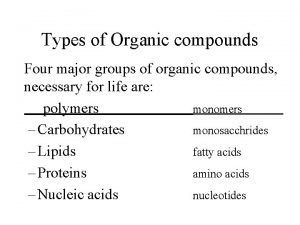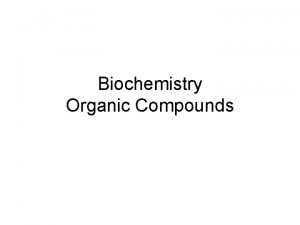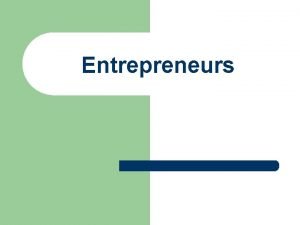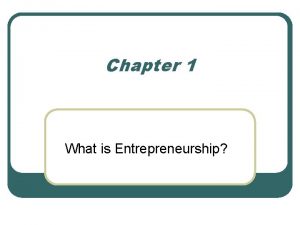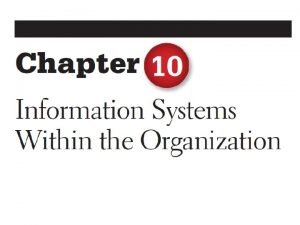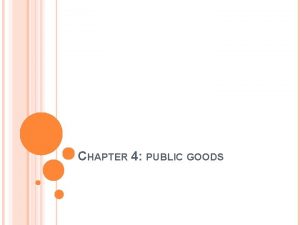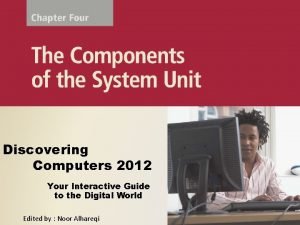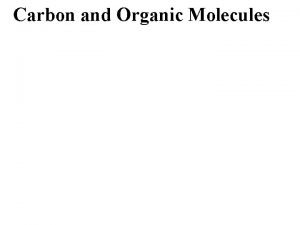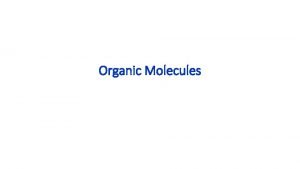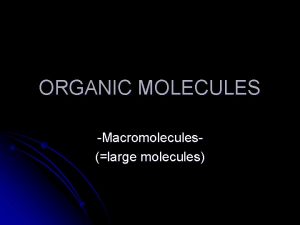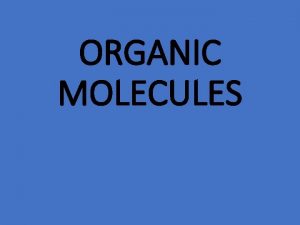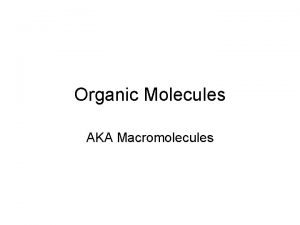Photosynthesis generates O 2 and organic molecules which











- Slides: 11

• Photosynthesis generates O 2 and organic molecules, which are used in cellular respiration • Cells use chemical energy stored in organic molecules to regenerate ATP, which powers work

Catabolic Pathways and Production of ATP • The breakdown of organic molecules is exergonic • Fermentation is a partial degradation of sugars that occurs without O 2 • Aerobic respiration consumes organic molecules and O 2 and yields ATP • Anaerobic respiration is similar to aerobic respiration but consumes compounds other than O 2 • Electrons from organic compounds are usually first transferred to NAD+, a coenzyme

Electron carriers The electron carriers in the first group bound on the enzymes in the cytoplasmic membrane. Carriers involved in the ETC system, such as FAD and cytochrome, are included in this group. The electron carriers in the second group are found freely in the cell. They can transfer electrons from one region of the cell to another. Coenzyme NAD (Nicotinamide adenine dinucleotide) and NADP (NAD phosphate) are found in this group.

• NADH passes the electrons to the electron transport chain • In aerobic respiration O 2 pulls electrons down the chain in an energy-yielding tumble • The energy yielded is used to regenerate ATP

• The stages of cellular respiration – Glycolysis (occurs in nearly all organisms) – The citric acid cycle (also called the Krebs cycle, takes place within the mitochondrial matrix) – Oxidative phosphorylation (The electron transport chain is in the cristae of the mitochondrion) – Energetic balance sheet for aerobic respiration ? ? ? ? ?

• oxidative phosphorylation because it is powered by redox reactions !!! • substrate-level phosphorylation formation of ATP by the direct transfer of a phoshoryl (PO 3) group to ADP from another phosphorylated compound.

• Mitochondria and chloroplasts – Are not part of the endomembrane system – Have a double membrane – Have proteins made by free ribosomes – Contain their own DNA

Chemiosmosis: The Energy-Coupling Mechanism • Electron transfer in the ETC causes proteins to pump H+ from the mitochondrial matrix to the intermembrane space • H+ then moves back across the membrane, passing through channels in ATP synthase

• ATP synthase uses the exergonic flow of H+ to drive phosphorylation of ATP • This is an example of chemiosmosis, the use of energy in a H+ gradient to drive cellular work • The H+ gradient is referred to as a protonmotive force, emphasizing its capacity to do work • glucose NADH electron transport chain proton-motive force ATP

• Anaerobic respiration uses an electron transport chain with an electron acceptor other than O 2 • Fermentation uses phosphorylation instead of an electron transport chain to generate ATP

• Obligate anaerobes • facultative anaerobes • The Pasteur effect is an inhibiting effect of oxygen on the fermentation process.
 Organic molecules vs inorganic molecules
Organic molecules vs inorganic molecules Which grammar generates regular language
Which grammar generates regular language Four types
Four types Organic vs inorganic molecules
Organic vs inorganic molecules Four types of organic compounds
Four types of organic compounds Generates fresh produce and other farm products
Generates fresh produce and other farm products Generates fresh produce and other farm products
Generates fresh produce and other farm products Generates fresh produce and other farm products
Generates fresh produce and other farm products A transaction is any business event that generates
A transaction is any business event that generates Situational leadership video
Situational leadership video Public provision
Public provision Discovering computers 2012
Discovering computers 2012


